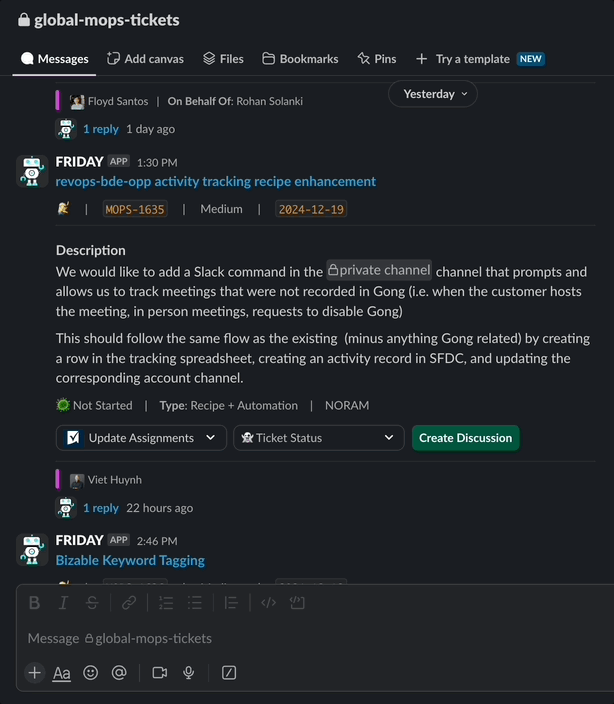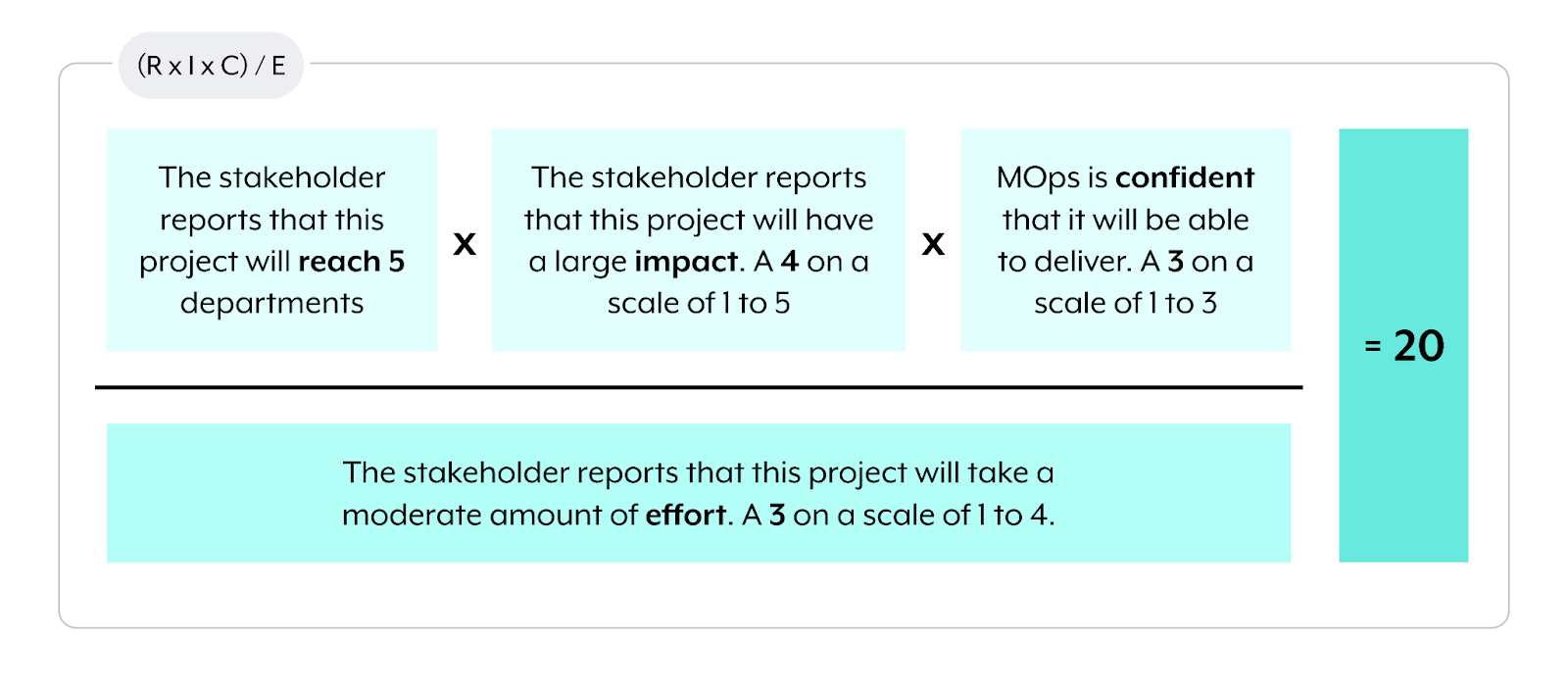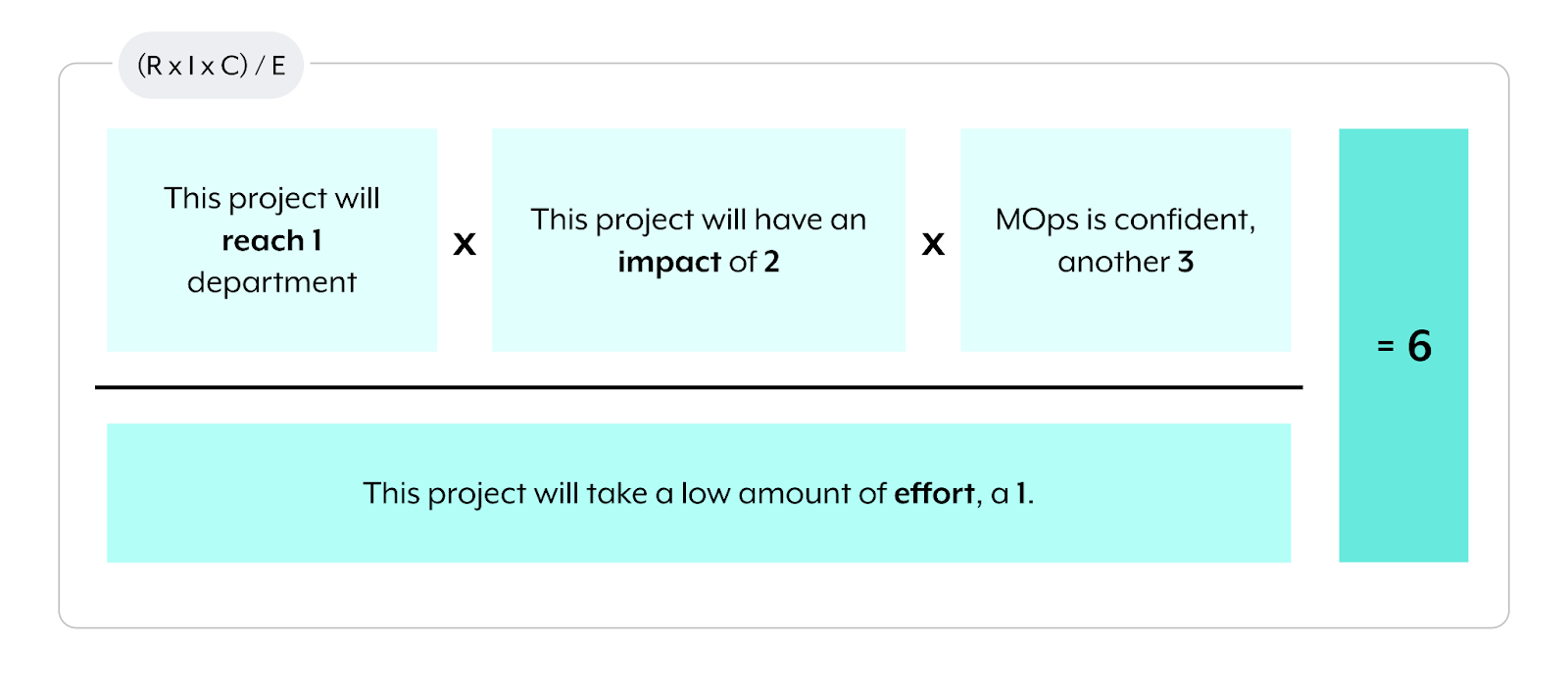Product teams understand: agile project management is 97% more productive, 91% more time efficient, produces 50% better results, and has a 470% higher ROI than traditional methods.
This flexible approach has propelled companies like Toyota to success.
But it isn’t just product roles that benefit from agility. Teams in support roles, like marketing operations, can use the same methods to provide faster, better support. At Workato, agile project management is key to maintaining the MOps revenue engine.
If you’re exploring agile methods or looking to refine project prioritization, collaboration, or execution, there are plenty of ways to integrate agile practices into your workflows—especially with automation.
Here’s how we do it at Workato:
An agile process for marketing
“Half of growth and marketing is bringing process to it. Product teams, for example, have strong methodologies to fall on such as scrum/agile and marketing teams can learn from that. For us, we’ve incorporated funnels, benchmarks, backlogs, and sprints for every channel.
A common mistake is thinking that pouring more into the top of the funnel is the only way to increase the final output. It’s often much more effective to optimize steps in a funnel vs adding more at the top.
Here at Workato, we’ve taken this to heart by implementing the following process:
1. Creating funnels for just about any program, campaign, experiment, and role
2. Setting benchmarks for each
3. Establishing a backlog of tests that allow us to improve said benchmarks
4. Running tests in weekly or bi-weekly sprints
5. Rinse and repeat
To summarize, run growth and marketing like a product – continued growth with a predictable cadence, and measurable ROI.”
-Rishi Mallik, Chief Growth Officer, Workato
Anyone who works in a support role knows what it’s like to manage a backlog of requests. Your performance, and the success of those you support, depends on prioritizing, executing, and collaborating on your backlog effectively—which is where agile methodology comes in.
My team receives about 20 marketing tickets per week. In the ticketing system, 85% of these requests are marked top priority by the requestor. If we took the traditional waterfall approach to product management, we’d drown in a torrent of urgent tasks.
Instead, we take an agile approach. Here’s an overview:
- Intake. Workato integrates with Jira and Slack to collect requests.
- Prioritization. Workato prioritizes tickets using the RICE score and then uses Jira to organize sprints in kanbans, where high and medium priority tickets are included in the current sprint and low priority tickets are relegated to the backlog for the next sprint.
- Collaboration. At Workato, the MOps team stays in sync with two agile scrum ceremonies: a biweekly sprint planning meeting and weekly standups in Slack.
- Execution. A sprint is an agile time management technique where the team focuses on finishing a specific project in a set period of time—2 weeks, at Workato. This approach breaks down broad objectives, like increasing pipeline, into projects that can be completed in one sprint. If necessary, the output is then expanded in the next sprint.
Let’s take a closer look at how we automate key aspects of each bullet point.
Sprint planning intake requests
Automation #1: A Slackbot collects requests and routes them to team members.
At Workato, the internal product (how employees interact with MOps) is as important to us as the external product (how leads interact with marketing). A big part of the internal product is our ticketing system, which we built ourselves using Workato, Jira, and Slack. Here’s how it works:
- It starts with a Slackbot, cheekily called Friday, that interacts with marketers to understand their requests and categorize them into a Jira Parent project like “campaign operations,” “email operations,” “market research,” “automation,” “reporting,” and so on.

- The Slackbot notifies a ticketing channel in Slack. Team members claim tickets in Slack based on swim lanes. If there is not a clear owner, the team lead assigns the ticket.

- The Slackbot routes the tickets to the MOps project in Jira.

How to prioritize sprints
Automation #2: Jira assigns a RICE score to each ticket.
Since a key aspect of agile methodology is radical prioritization, the MOps team at Workato relies on an objective formula: the RICE score. This prioritization formula considers:
- Reach: The number of people affected by the project (1+)
- Impact: The magnitude of change or benefit the project will bring (small to large)
- Confidence: The level of certainty in the estimates for reach and impact (0-100%)
- Effort: The time and resources required to implement the project (1+)
Here is the RICE formula, which Jira calculates for each ticket:
(R x I x C) / E
At Workato, the stakeholder inputs the Reach, Impact, and Effort values, while the person fulfilling the request inputs the Confidence value. As a result, RICE is a good balance of stakeholder and MOps input compared to something like “Story Points,” which only measures effort and not impact.
Let’s say the task at hand is developing next quarter’s pipeline forecast. The formula would look like:

On the other hand, let’s say the task is teaching a new hire how to understand the company’s marketing analytics platform. The formula might look like:

As you can see, the pipeline forecast should be prioritized over teaching the new hire.
You can calculate the RICE score of your projects using this RICE score calculator, but I think it’s much easier to include custom fields for reach, impact, confidence, and effort in your ticketing system alongside a calculated field for “RICE Score.”
How to hold a remote standup
Automation #3: A scrum sprint in Slack.
Standups are a powerful way to promote team collaboration. The first standups looked like pregame huddles: teams meeting daily in the office, standing in circles, and planning the next 24 hours together.
If you’re running a global, remote, or hybrid team, this type of standup is hard to pull off. My team is only in the same room a few times a year, so when we do standups, we do them in Slack.
Standup Bot is a Slackbot that lets you hold a chat standup on your team’s Slack channel. It’s a way to get on the same page with a team that works in different timezones.
You can learn about Standup Bot here.
Why automate agile project management
Even with the perfect process, there will always be distractions and red herrings. The best solution I’ve found is to automate where possible, so I can focus on removing blockers instead of enforcing protocol.
